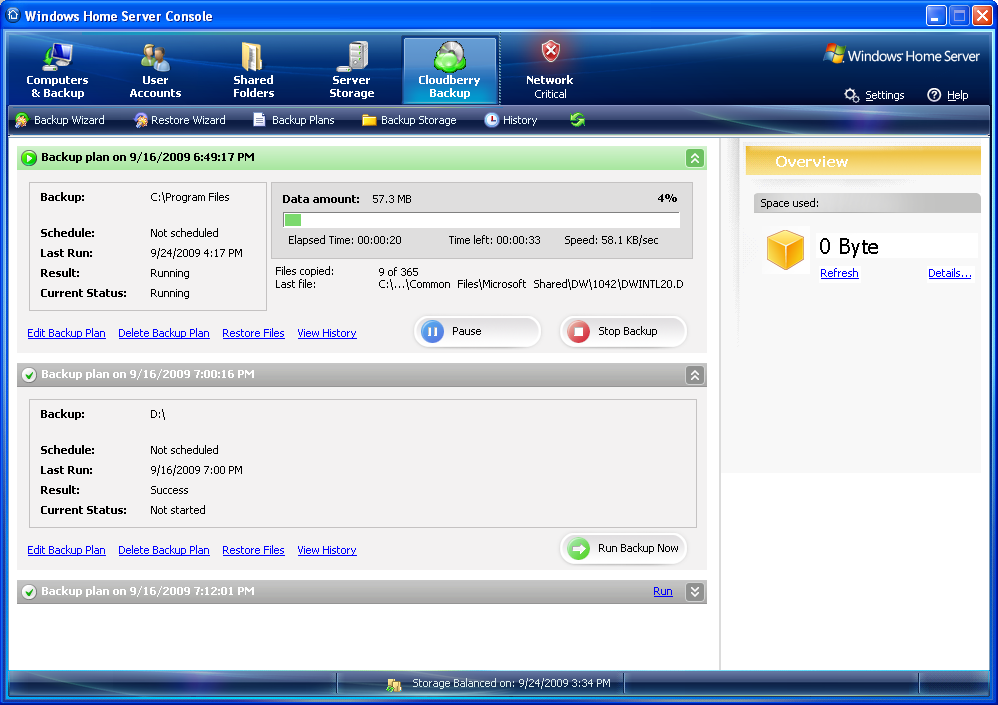

- #CLOUDBERRY BACKUP FULL VERSION#
- #CLOUDBERRY BACKUP FULL#
- #CLOUDBERRY BACKUP SOFTWARE#
- #CLOUDBERRY BACKUP PC#
#CLOUDBERRY BACKUP SOFTWARE#
And if you’re simply looking to back up your computer’s data, check out our guides to the best Windows backup software and the best online backup services.Amazon WorkSpaces provides the flexibility to pay monthly or hourly. But it’s a handful for the average user, who might be better off with something easier such as Aomei’s MultCloud for syncing their online services. Advanced users should check out the free or desktop version, and anyone doing IT should check out the desktop and server versions.
#CLOUDBERRY BACKUP FULL#
End users: Stick with the free versionĬloudBerry Backup in its full glory is impressive in its scope. The IT heritage is plain to see from the copious and granular information on display. IDGĬloudBerry Backup free edition backing up from OneDrive to Google Drive.
#CLOUDBERRY BACKUP FULL VERSION#
You can find a full version comparison at the very bottom of the CloudBerry Backup product page. Note that I did not test the SQL or Exchange backup facilities in the more expensive versions. To get imaging or disaster recovery features, you’ll need to plop down at least $120 for server edition (Windows or Linux).

The free version is limited to managing 200GB of data, and there’s only forum support from your peers, while the $30 desktop version offers company support and can handle up to 5TB of data. However, as with so many Windows backup programs, it’s not newbie-friendly.ĬloudBerry Backup is available for Windows, macOS, and Linux, both clients and servers. It’s easy if you know what you’re doing and are familiar with the backup universe. Yup, like I just said, options are a good thing! Design and performanceĬloudBerry Backup is easy on the eye, if not particularly modern, and the interface is intuitively laid out. Even better, you can define how long before the delete occurs, as a safety net. Note that CloudBerry Backup does not sync/mirror as such however, there is an option to delete files from the destination that have been deleted from the source, which is similar. To be fair, if you simply ignore all the options and click-through, you should be fine. For the user who just wants to click a button and have their stuff well and truly backed up, not so much. There’s scheduling, retention settings, inclusion/exclusion filtering of files, file versioning (or not), and a whole lot more. The program sports just about every option there is for backup.ĬloudBerry Backup is also supreme configurable, as you can see from the dialog shown above. The pricier versions also support imaging (backing up entire drives or partitions) and restoring to different hardware.Ĭloudberry’s advanced and copious filter options (determining which files will be backed up and which won’t) are just the tip of the configuration iceberg. It even supports FTP, which means you can set up your own remote backups.
#CLOUDBERRY BACKUP PC#
While the one-job (“plan,” in CloudBerry-speak), service-to-service backup is CloudBerry’s raison d’etre, it can also back up from your local computer to an online storage service, and from your PC to local destinations such as USB hard drives, NAS boxes, and other PCs on your network. Apple’s iCloud is not supported, because the folks in Cupertino don’t allow third parties to access the service in that fashion. Nearly all the major backup services are supported by Cloudberry Backup.Īs so many services are included, I was a perplexed to find the popular Dropbox missing from the list. But there are a whole lot more, as shown in the screen capture below. Just some of the biggies are Amazon S3 and Glacier, Microsoft One Drive and Azure, Google Drive, BackBlaze, etc. The list of supported services is impressive.


 0 kommentar(er)
0 kommentar(er)
